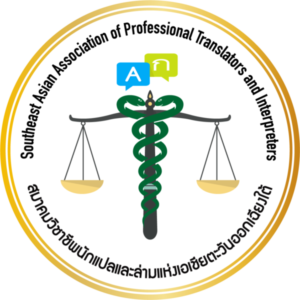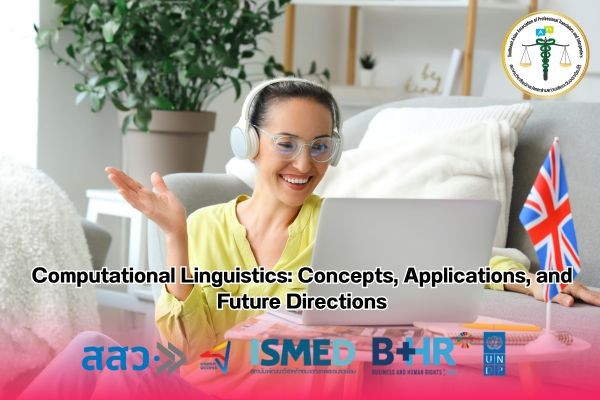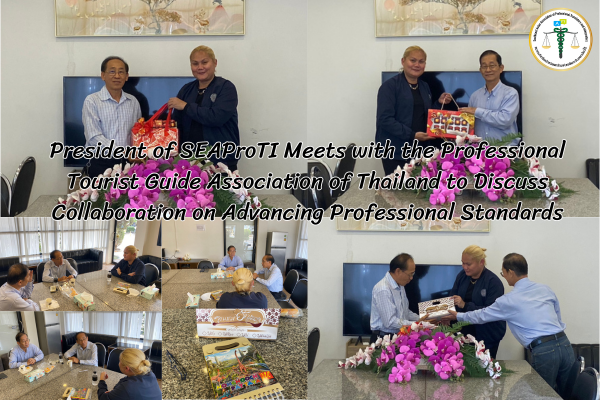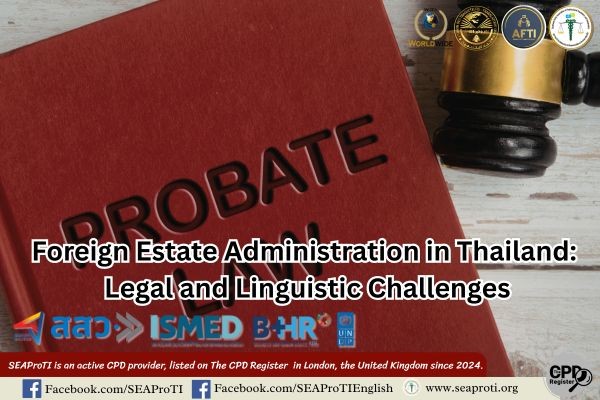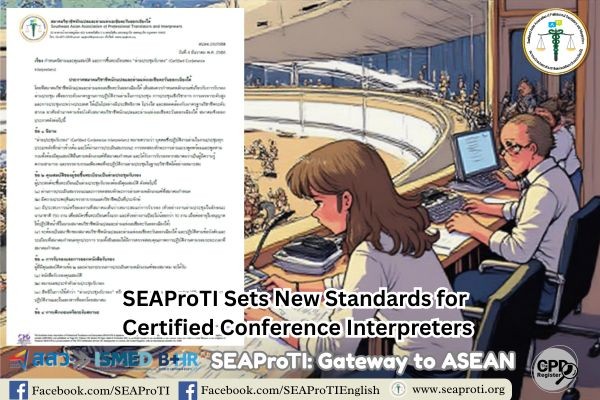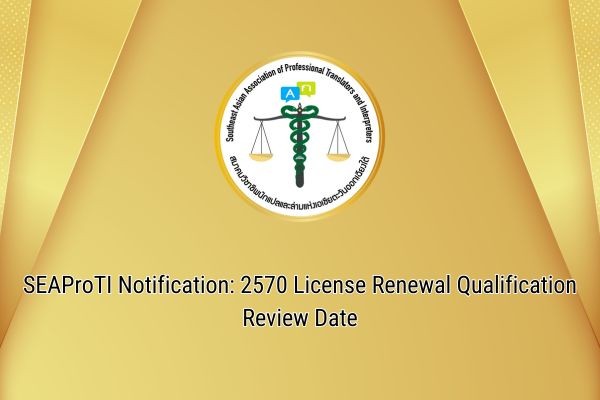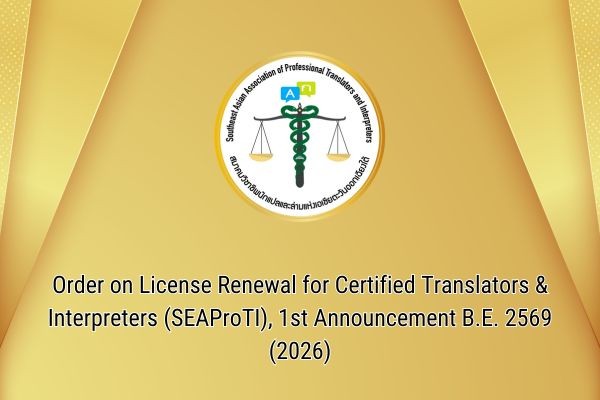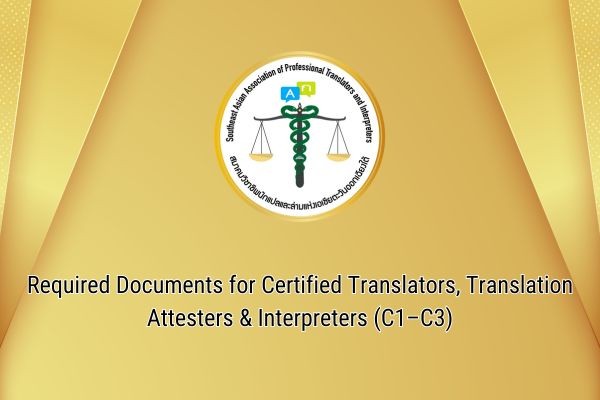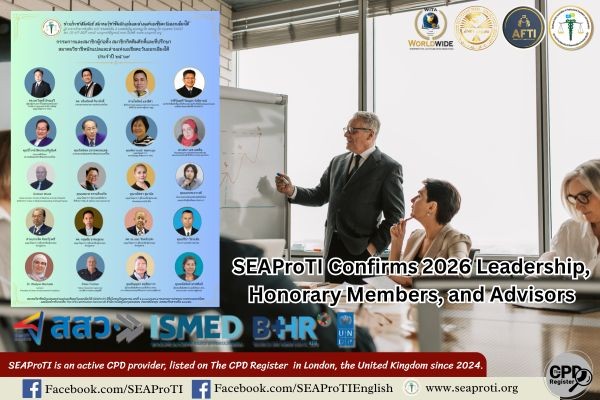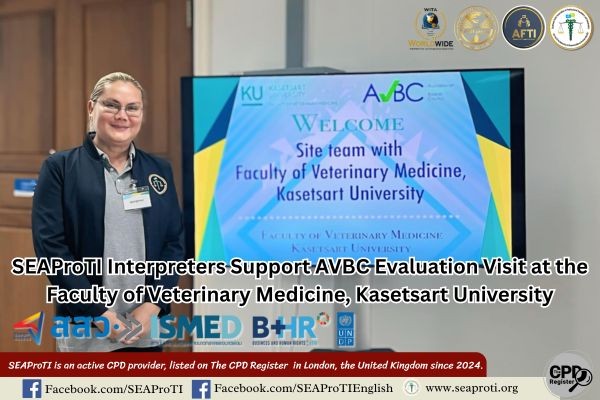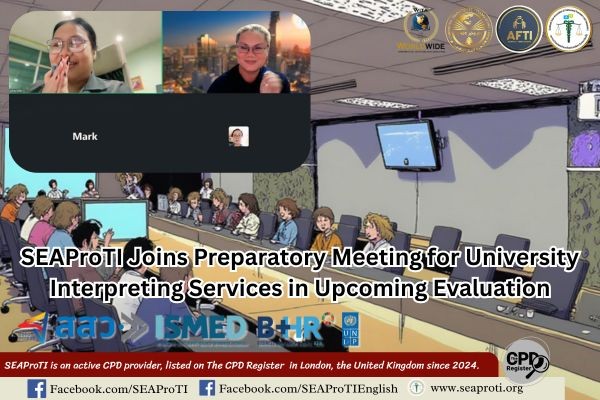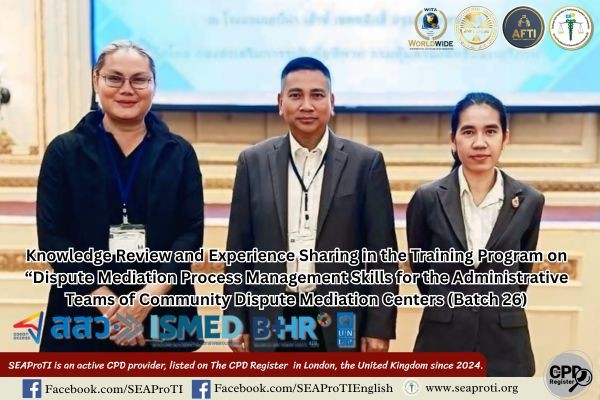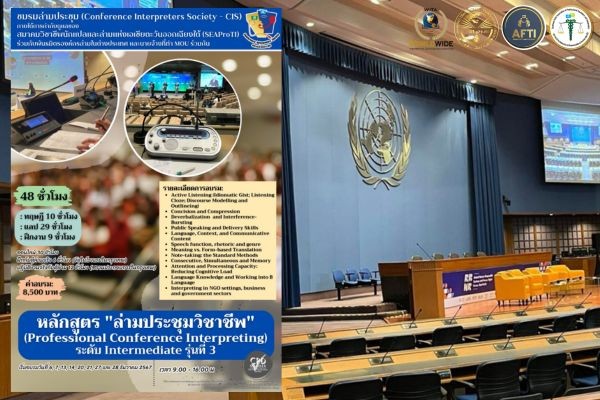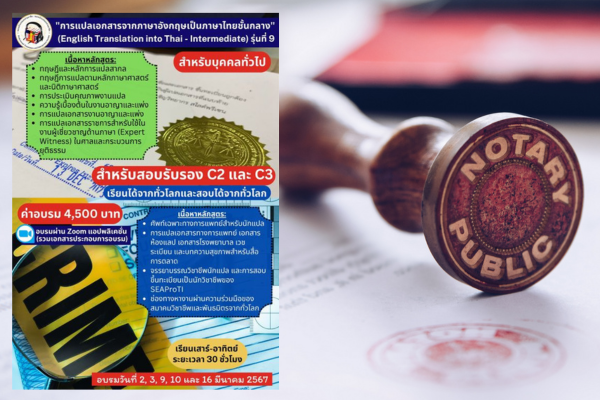Computational Linguistics: Concepts, Applications, and Future Directions
By Kanyanut Onsan
10 August 2025, Bangkok – In the digital era, where information technology and artificial intelligence (AI) play an increasingly integral role, computational linguistics (CL) has emerged as a vital interdisciplinary field that integrates linguistics, computer science, statistical mathematics, and machine learning. Its goal is to enable computers to “understand” and “use” human languages accurately and efficiently. This article outlines the concepts, principles, components, and distinctions among CL, natural language processing (NLP), and AI. It also discusses the essential skills, career pathways, challenges, and future trends in CL, drawing on research and authoritative sources to provide an in-depth understanding of the field’s role in a data- and language-driven world.
Introduction
In the digital era, where information technology and artificial intelligence (AI) play an increasingly profound role in human daily life, enabling computers to “understand” and “use” human language accurately has become a significant scientific challenge. One of the key disciplines driving the development of this technology is computational linguistics, an interdisciplinary field that integrates knowledge from linguistics, computer science, and statistical mathematics to process, analyze, and build systems capable of handling human language efficiently.
The importance of computational linguistics is evident in a wide range of technologies, such as machine translation, speech recognition, speech synthesis, sentiment analysis, and virtual assistants like Siri, Alexa, and ChatGPT, which have gained widespread popularity.
The development of such systems requires not only an understanding of the structure and meaning of language, but also programming skills, algorithm design, and the application of machine learning to enable computers to learn and adapt to language contexts with high precision.
The purpose of this article is to explain the concepts, principles, and significance of computational linguistics, its applications, career paths, challenges, and future trends, to provide an in-depth understanding of the field’s role in a world driven by data and language.
Fundamentals and Concepts of Computational Linguistics
Definition
Computational linguistics (CL) refers to the use of computational methods to analyze, understand, and generate human language, combining expertise from linguistics, computer science, and AI (Manning & Schütze, 1999).
Historical Development
- 1950s–1970s: Focused primarily on practical applications, such as basic machine translation and question-answering systems (Hutchins, 2001).
- 1970s–1980s: Incorporated theoretical grammar frameworks such as GPSG, HPSG, and LFG, along with developments in formal semantics.
- Late 1980s onwards: Revolutionized by statistical methods, large-scale corpora, and the adoption of neural networks (Steedman, 2007).
- Present: Integration of symbolic methods with statistical models and deep learning to handle increasingly complex linguistic tasks.
Core Components
- Linguistic components: Phonetics, phonology, morphology, syntax, semantics, pragmatics, and discourse analysis.
- Computational and algorithmic components: Development of parsers, taggers, generators, and statistical/deep learning models.
- Theoretical foundations: Construction of linguistic corpora and computationally processable grammar frameworks.
Distinctions among CL, NLP, and AI
- CL: Focuses on theoretical and scientific research.
- NLP: Oriented toward applied and engineering solutions for language systems.
- AI: A broader domain encompassing both CL and NLP.
Essential Skills and Knowledge
Technical and Domain Knowledge
- Programming (Python, Java, C++, R, SQL)
- Mathematics and statistics (probability, linear algebra)
- Linguistic theory and analysis
- AI and machine learning knowledge
- Data science and data management
Social and Professional Skills
- Creative problem-solving
- Logical and abstract thinking
- Time and project management
- Communication and teamwork
- Adaptability to emerging technologies
- Leadership in interdisciplinary projects
Career Paths and Roles in the Job Market
Skills in computational linguistics open up opportunities to work in a wide range of roles and industries, integrating linguistics, computer science, artificial intelligence, and data science. Key career paths include:
- Computational Linguist: Develops models and algorithms enabling machines to understand and generate human language, often working in research or in the development of language technology products.
- Natural Language Processing (NLP) Engineer or Scientist: Creates practical NLP applications such as chatbots, speech recognition systems, machine translation, sentiment analysis, and information retrieval systems.
- Machine Learning Engineer: Applies machine learning and deep learning techniques to language data to enhance the performance of language understanding and generation systems.
- Data Scientist: Analyzes large-scale language datasets (corpora) and develops data-driven models for language-related tasks.
Conclusion
Computational linguistics is a crucial discipline that bridges the knowledge of linguistics with information technology and artificial intelligence, focusing on the development of tools and systems capable of understanding and processing human language efficiently. The evolution of this field reflects a transition from rule-based techniques and traditional methods to statistical approaches and machine learning, as well as the current integration of symbolic methods with neural network models.
The applications of computational linguistics span a wide range of technologies that profoundly impact everyday life, such as machine translation, virtual assistants, and language data analysis systems, while also driving innovation across various industries.
For those interested in pursuing a career in this field, it is essential to possess specialized knowledge in linguistics, programming, and mathematics, alongside social and problem-solving skills, to effectively navigate the rapid technological changes and the complexity of human language.
Given its significance and future development trends, computational linguistics presents both high potential and considerable challenges in terms of research and practical applications in a world where data and language are central to communication and collaboration between humans and machines.
References
- Hutchins, W. J. (2001). Machine translation over fifty years. Histoire Épistémologie Langage, 23(1), 7–31. https://doi.org/10.3406/hel.2001.3006
- Jurafsky, D., & Martin, J. H. (2023). Speech and language processing (3rd ed. draft). Stanford University. https://web.stanford.edu/~jurafsky/slp3/
- Manning, C. D., & Schütze, H. (1999). Foundations of statistical natural language processing. MIT Press.
- Steedman, M. (2007). The syntactic process. MIT Press.
About SEAProTI Certified Translators, Certification Providers, and Interpreters
The Southeast Asian Association of Professional Translators and Interpreters (SEAProTI) has published official guidelines and eligibility criteria for individuals seeking registration as Certified Translators, Translation Certification Providers, and Certified Interpreters under Chapter 9 and Chapter 10 of the Royal Thai Government Gazette, issued by the Secretariat of the Cabinet, Office of the Prime Minister, on 25 July 2024 (Vol. 141, Part 66 Ng, p. 100). Full text available at: The Royal Thai Government Gazette
Computational Linguistics: Concepts, Applications, and Future Directions
โดย กัญญณัท อ้นแสน
10 สิงหาคม 2568, กรุงเทพมหานคร – ในยุคดิจิทัลที่เทคโนโลยีสารสนเทศและปัญญาประดิษฐ์ (Artificial Intelligence: AI) มีบทบาทอย่างลึกซึ้ง ภาษาศาสตร์เชิงคอมพิวเตอร์ (Computational Linguistics: CL) กลายเป็นสาขาวิชาสำคัญที่ผสานความรู้ด้านภาษาศาสตร์ วิทยาการคอมพิวเตอร์ คณิตศาสตร์เชิงสถิติ และการเรียนรู้ของเครื่อง เพื่อให้คอมพิวเตอร์สามารถ “เข้าใจ” และ “ใช้” ภาษามนุษย์ได้อย่างถูกต้องและมีประสิทธิภาพ บทความนี้อธิบายแนวคิด หลักการ องค์ประกอบ ความแตกต่างของ CL, NLP และ AI รวมถึงทักษะที่จำเป็น เส้นทางอาชีพ ความท้าทาย และแนวโน้มในอนาคต โดยอ้างอิงจากงานวิจัยและตำราสำคัญ เพื่อสร้างความเข้าใจเชิงลึกต่อบทบาทของภาษาศาสตร์เชิงคอมพิวเตอร์ในโลกที่ขับเคลื่อนด้วยข้อมูลและภาษา
บทนำ
ในยุคดิจิทัลที่เทคโนโลยีสารสนเทศและปัญญาประดิษฐ์ (Artificial Intelligence: AI) เข้ามามีบทบาทอย่างลึกซึ้งในชีวิตประจำวันของมนุษย์ การทำให้คอมพิวเตอร์ “เข้าใจ” และ “ใช้” ภาษาของมนุษย์ได้อย่างถูกต้องจึงกลายเป็นความท้าทายสำคัญทางวิทยาการ หนึ่งในสาขาที่รับบทบาทหลักในการพัฒนาเทคโนโลยีนี้คือ ภาษาศาสตร์เชิงคอมพิวเตอร์ (Computational Linguistics) ซึ่งเป็นศาสตร์สหวิทยาการที่ผสานองค์ความรู้ด้านภาษาศาสตร์ (Linguistics) เข้ากับวิทยาการคอมพิวเตอร์ (Computer Science) และคณิตศาสตร์เชิงสถิติ เพื่อประมวลผล วิเคราะห์ และสร้างระบบที่สามารถจัดการภาษามนุษย์ได้อย่างมีประสิทธิภาพ
ความสำคัญของภาษาศาสตร์เชิงคอมพิวเตอร์ปรากฏชัดในหลากหลายเทคโนโลยี เช่น ระบบแปลภาษาอัตโนมัติ (Machine Translation), การจำเสียงพูด (Speech Recognition), การสังเคราะห์เสียงพูด (Speech Synthesis), การวิเคราะห์ความรู้สึกของข้อความ (Sentiment Analysis) ตลอดจนผู้ช่วยเสมือน (Virtual Assistants) อย่าง Siri, Alexa และ ChatGPT ที่ได้รับความนิยมอย่างกว้างขวาง
การพัฒนาระบบเหล่านี้ไม่เพียงต้องอาศัยความรู้ด้านโครงสร้างและความหมายของภาษาเท่านั้น แต่ยังต้องใช้ทักษะด้านการเขียนโปรแกรม การออกแบบอัลกอริทึม และการประยุกต์ใช้การเรียนรู้ของเครื่อง (Machine Learning) เพื่อให้คอมพิวเตอร์สามารถเรียนรู้และปรับตัวตามบริบทของภาษาได้อย่างแม่นยำ
บทความนี้มีวัตถุประสงค์เพื่ออธิบายแนวคิด หลักการ และความสำคัญของภาษาศาสตร์เชิงคอมพิวเตอร์ การประยุกต์ใช้งาน เส้นทางอาชีพ ความท้าทาย และแนวโน้มในอนาคต เพื่อสร้างความเข้าใจเชิงลึกและชี้ให้เห็นบทบาทของศาสตร์นี้ในโลกที่ขับเคลื่อนด้วยข้อมูลและภาษาเป็นศูนย์กลาง
พื้นฐานและแนวคิดของ Computational Linguistics
คำจำกัดความ
ภาษาศาสตร์เชิงคอมพิวเตอร์ (CL) หมายถึงการใช้วิธีเชิงคำนวณในการวิเคราะห์ การทำความเข้าใจ และการสร้างภาษามนุษย์ โดยผสานความรู้จากสาขาภาษาศาสตร์ วิทยาการคอมพิวเตอร์ และ AI (Manning & Schütze, 1999)
วิวัฒนาการ
- 1950–1970: มุ่งเน้นการประยุกต์ เช่น การแปลภาษาอัตโนมัติขั้นพื้นฐานและระบบตอบคำถาม (Hutchins, 2001)
- 1970–1980: ใช้กรอบไวยากรณ์เชิงทฤษฎี เช่น GPSG, HPSG, LFG และพัฒนาทฤษฎีความหมายเชิงตรรกะ
- ปลายทศวรรษ 1980 เป็นต้นมา: การปฏิวัติด้วยวิธีเชิงสถิติและฐานข้อมูลขนาดใหญ่ รวมถึงการใช้โครงข่ายประสาทเทียม (Steedman, 2007)
- ปัจจุบัน: ผสมผสานวิธีเชิงสัญลักษณ์กับโมเดลเชิงสถิติและ deep learning เพื่อตอบสนองการประมวลผลภาษาที่ซับซ้อน
องค์ประกอบหลัก
- องค์ประกอบทางภาษาศาสตร์: สัทศาสตร์ สัทวิทยา สัณฐานวิทยา ไวยากรณ์ อรรถศาสตร์ วัจนปฏิบัติศาสตร์ และการวิเคราะห์วาทกรรม
- องค์ประกอบเชิงคำนวณและอัลกอริทึม: การพัฒนา parser, tagger, generator และโมเดลเชิงสถิติ/ deep learning
- รากฐานเชิงทฤษฎี: การสร้างคลังข้อมูลภาษา (corpora) และกรอบไวยากรณ์ที่สามารถประมวลผลเชิงคำนวณได้
ความแตกต่างระหว่าง CL, NLP และ AI
- CL: เน้นการวิจัยเชิงทฤษฎีและวิทยาศาสตร์
- NLP: เน้นการประยุกต์และวิศวกรรมระบบภาษา
- AI: ครอบคลุมกว้าง รวมทั้ง CL และ NLP
ทักษะและความรู้ที่จำเป็น
ความรู้เฉพาะทาง
- การเขียนโปรแกรม (Python, Java, C++, R, SQL)
- คณิตศาสตร์และสถิติ (probability, linear algebra)
- ความรู้ด้านภาษาศาสตร์
- ความรู้ด้าน AI และ machine learning
- การจัดการข้อมูลและ data science
ทักษะทางสังคม
- การแก้ปัญหาเชิงสร้างสรรค์
- การคิดเชิงตรรกะและนามธรรม
- การจัดการเวลาและโครงการ
- การสื่อสารและทำงานเป็นทีม
- ความยืดหยุ่นในการเรียนรู้เทคโนโลยีใหม่
- ภาวะผู้นำในงานข้ามสาขา
เส้นทางอาชีพและบทบาทในตลาดแรงงาน
ทักษะในสาขาภาษาศาสตร์เชิงคอมพิวเตอร์ เปิดโอกาสให้สามารถเลือกทำงานในบทบาทและสายอาชีพที่หลากหลายในหลายอุตสาหกรรม โดยเน้นการบูรณาการระหว่างภาษาศาสตร์ วิทยาการคอมพิวเตอร์ ปัญญาประดิษฐ์ และวิทยาศาสตร์ข้อมูล เส้นทางอาชีพที่สำคัญ ได้แก่
- นักภาษาศาสตร์เชิงคอมพิวเตอร์: มีหน้าที่พัฒนาแบบจำลองและอัลกอริทึมเพื่อให้เครื่องจักรสามารถเข้าใจและสร้างภาษามนุษย์ได้ โดยส่วนใหญ่จะมีบทบาทในการวิจัยหรือพัฒนาผลิตภัณฑ์ทางเทคโนโลยีภาษา
- วิศวกรหรือนักวิทยาศาสตร์ประมวลผลภาษาธรรมชาติ: สร้างแอปพลิเคชันประมวลผลภาษาธรรมชาติที่ใช้งานได้จริง เช่น แชตบอต ระบบรู้จำเสียงพูด ระบบแปลภาษาโดยเครื่อง การวิเคราะห์อารมณ์ และระบบสืบค้นข้อมูล
- วิศวกรผู้พัฒนาระบบการเรียนรู้ของเครื่องจักร: อาชีพนี้นำเทคนิคการเรียนรู้ของเครื่องและการเรียนรู้เชิงลึกมาประยุกต์ใช้กับข้อมูลภาษาเพื่อเพิ่มประสิทธิภาพในการเข้าใจและสร้างภาษา
- นักวิทยาศาสตร์ข้อมูล: วิเคราะห์ชุดข้อมูลภาษาขนาดใหญ่ (corpora) และสร้างแบบจำลองที่อิงข้อมูลสำหรับงานด้านภาษา
สรุป
ภาษาศาสตร์เชิงคอมพิวเตอร์เป็นสาขาวิชาที่มีบทบาทสำคัญในการเชื่อมโยงความรู้ด้านภาษาศาสตร์กับเทคโนโลยีสารสนเทศและปัญญาประดิษฐ์ โดยเน้นการพัฒนาเครื่องมือและระบบที่สามารถเข้าใจและจัดการภาษามนุษย์ได้อย่างมีประสิทธิภาพ วิวัฒนาการของสาขานี้สะท้อนให้เห็นถึงการเปลี่ยนผ่านจากการใช้เทคนิคเชิงกฎและกระบวนวิธีแบบดั้งเดิมสู่การใช้วิธีการเชิงสถิติและการเรียนรู้ของเครื่อง รวมถึงการบูรณาการแนวทางเชิงสัญลักษณ์กับโมเดลเชิงประสาทเทียมในยุคปัจจุบัน
การประยุกต์ใช้ภาษาศาสตร์เชิงคอมพิวเตอร์ครอบคลุมหลากหลายเทคโนโลยีที่ส่งผลกระทบอย่างลึกซึ้งต่อชีวิตประจำวัน เช่น ระบบแปลภาษาอัตโนมัติ ผู้ช่วยเสมือน และระบบวิเคราะห์ข้อมูลภาษา ตลอดจนช่วยขับเคลื่อนนวัตกรรมในหลากหลายอุตสาหกรรม
สำหรับผู้ที่สนใจเข้าสู่สายงานนี้ จำเป็นต้องมีทั้งความรู้เฉพาะทางด้านภาษาศาสตร์ การเขียนโปรแกรม และคณิตศาสตร์ควบคู่ไปกับทักษะด้านสังคมและการแก้ปัญหา เพื่อให้สามารถรับมือกับความท้าทายของเทคโนโลยีที่เปลี่ยนแปลงอย่างรวดเร็วและความซับซ้อนของภาษามนุษย์ได้อย่างมีประสิทธิผล
ด้วยความสำคัญและแนวโน้มการพัฒนาในอนาคต ภาษาศาสตร์เชิงคอมพิวเตอร์จึงเป็นสาขาที่มีโอกาสและความท้าทายสูง ทั้งในแง่ของงานวิจัยและการประยุกต์ใช้จริง ในโลกที่ข้อมูลและภาษากลายเป็นแกนกลางของการสื่อสารและการทำงานร่วมกันระหว่างมนุษย์และเครื่องจักร
เอกสารอ้างอิง
- Hutchins, W. J. (2001). Machine translation over fifty years. Histoire Épistémologie Langage, 23(1), 7–31. https://doi.org/10.3406/hel.2001.3006
- Jurafsky, D., & Martin, J. H. (2023). Speech and language processing (3rd ed. draft). Stanford University. https://web.stanford.edu/~jurafsky/slp3/
- Manning, C. D., & Schütze, H. (1999). Foundations of statistical natural language processing. MIT Press.
- Steedman, M. (2007). The syntactic process. MIT Press.
เกี่ยวกับนักแปลรับรอง ผู้รับรองการแปล และล่ามรับรองของสมาคมวิชาชีพนักแปลและล่ามแห่งเอเชียตะวันออกเฉียงใต้
สมาคมวิชาชีพนักแปลและล่ามแห่งเอเชียตะวันออกเฉียงใต้ (SEAProTI) ได้ประกาศหลักเกณฑ์และคุณสมบัติผู้ที่ขึ้นทะเบียนเป็น “นักแปลรับรอง (Certified Translators) และผู้รับรองการแปล (Translation Certification Providers) และล่ามรับรอง (Certified Interpreters)” ของสมาคม หมวดที่ 9 และหมวดที่ 10 ในราชกิจจานุเบกษา ของสำนักเลขาธิการคณะรัฐมนตรี ในสำนักนายกรัฐมนตรี แห่งราชอาณาจักรไทย ลงวันที่ 25 ก.ค. 2567 เล่มที่ 141 ตอนที่ 66 ง หน้า 100 อ่านฉบับเต็มได้ที่: นักแปลรับรอง ผู้รับรองการแปล และล่ามรับรอง

